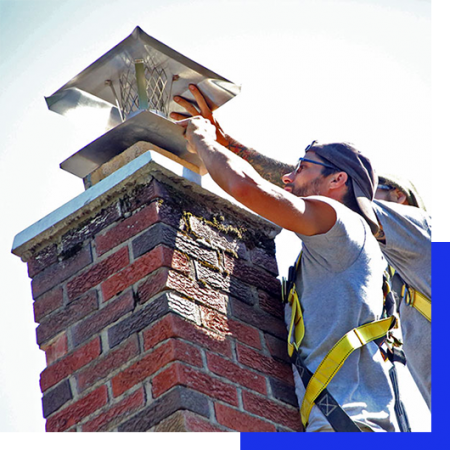
Chimney Repair Essentials: What Every Homeowner Needs to Know
When you think about home maintenance, the chimney probably doesn’t top your list—but it should. This essential structure not only supports your fireplace’s function but also protects your home from dangerous fumes, moisture damage, and even fire hazards. Yet, many homeowners overlook the signs of damage until it’s too late. That’s where timely chimney repair becomes critical.
Whether you use your fireplace often or sparingly, understanding when and how to handle chimney repairs can save you thousands in future damage and give you peace of mind.
Why Chimney Repairs Are Crucial
Safety First
A damaged chimney can quickly become a safety hazard. Cracks in the flue or masonry may allow toxic gases—like carbon monoxide—to seep into your home. Meanwhile, creosote buildup and deteriorated liners increase the risk of chimney fires.
Addressing these issues with prompt chimney repair keeps your fireplace functioning safely and protects your family from avoidable risks. That’s why many trusted professionals recommend pairing routine inspections with repair services from reliable chimney cleaning providers.
Protecting Your Home’s Structure
The chimney is exposed to the elements year-round. Rain, snow, and fluctuating temperatures can wear down the masonry, cause cracks, or allow water to seep in. If moisture invades the chimney structure, it can lead to internal decay, ceiling stains, and even mold.
Timely repairs prevent structural degradation. Replacing damaged bricks, sealing cracks, and installing or repairing the chimney crown are effective ways to preserve your home’s integrity and appearance.
Improving Heating Efficiency
A well-maintained chimney optimizes airflow and ensures clean, efficient combustion. Leaky or blocked chimneys not only waste energy but can also draw smoke and soot back into your living space.
Comprehensive chimney repair services—can restore the efficiency of your fireplace system and improve your home’s overall heating performance.
Common Chimney Problems and Their Solutions
Cracked Masonry and Mortar Joints
Bricks and mortar naturally deteriorate over time, especially when exposed to freeze-thaw cycles. When cracks form, water intrusion becomes a real threat. Repointing and replacing damaged bricks can restore both function and aesthetics.
Damaged or Missing Chimney Cap
The chimney cap serves as the first line of defense against rain, debris, and animals. If your cap is rusted, missing, or broken, it exposes your chimney to internal damage. Replacing it is a simple yet vital part of a proper repair plan.
Flue Liner Issues
The flue liner directs smoke and gases safely out of your home. If it’s cracked or corroded, it can’t perform this function efficiently. In severe cases, the liner may need full replacement with a stainless steel or ceramic option that meets modern safety standards.
Digital tools, such as those provided by this platform, help technicians assess damage with pinpoint accuracy using video inspection technology, ensuring the correct repair method is applied.
When to Schedule Chimney Repairs
After Seasonal Changes
Winter and rainy seasons can be brutal on chimney structures. Inspect your chimney each spring to check for signs of weather-related damage, such as spalling bricks or leaking mortar.
Before Lighting the First Fire of the Season
If it’s been months since your last fire, schedule an inspection before reigniting your fireplace. Hidden damage or blockages may have developed while the chimney sat unused.
Immediately After Noticing Red Flags
Don’t ignore smoke backflow, strong fireplace odors, crumbling bricks, or visible creosote. These are indicators that your chimney may be compromised and in need of immediate attention.
FAQs
Q: How often should my chimney be repaired?
Chimney components should be inspected annually. Repairs are made as needed, depending on the wear and tear observed.
Q: Can I perform chimney repairs myself?
Some minor upkeep like cleaning is manageable, but structural or internal repairs should always be done by a certified professional.
Q: Is chimney repair covered by homeowners insurance?
If damage is caused by a covered event like a storm, insurance may help. Normal wear-and-tear typically isn’t covered.
Q: What’s the average cost of chimney repairs?
Costs vary by issue—minor repairs may cost a few hundred dollars, while major masonry or liner work can reach several thousand.
Q: What happens if I ignore needed chimney repairs?
Neglecting chimney damage can lead to fires, toxic gas leaks, mold growth, and costly structural repairs down the road.
A functional chimney is more than just a home feature—it’s a safety system. By staying informed and scheduling prompt chimney repair when needed, you protect your home, your health, and your investment. Don’t wait for a small issue to turn into a major problem—take action and breathe easier knowing your chimney is in expert hands.